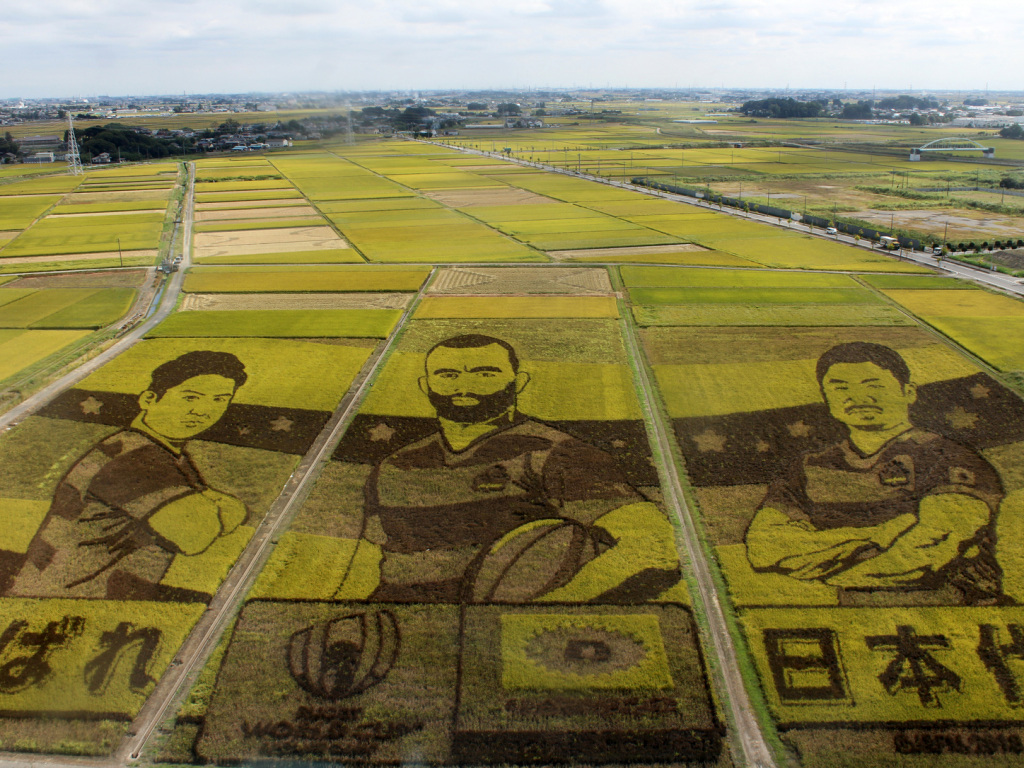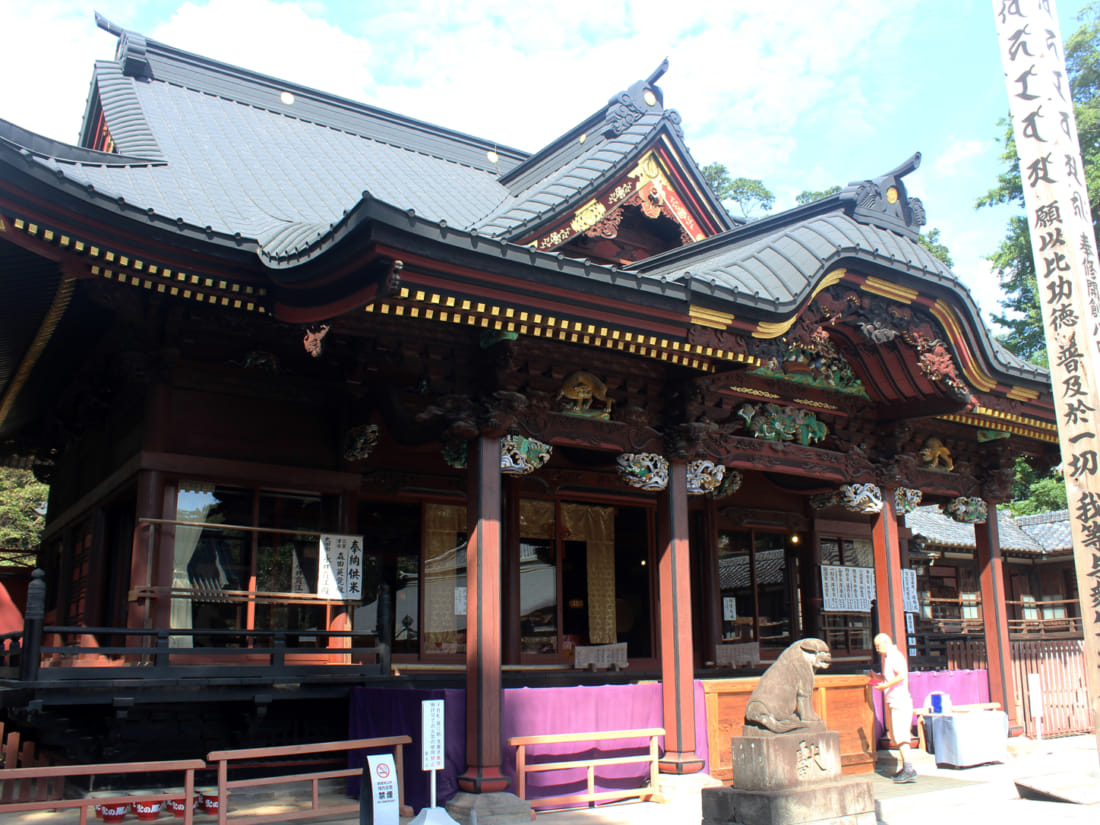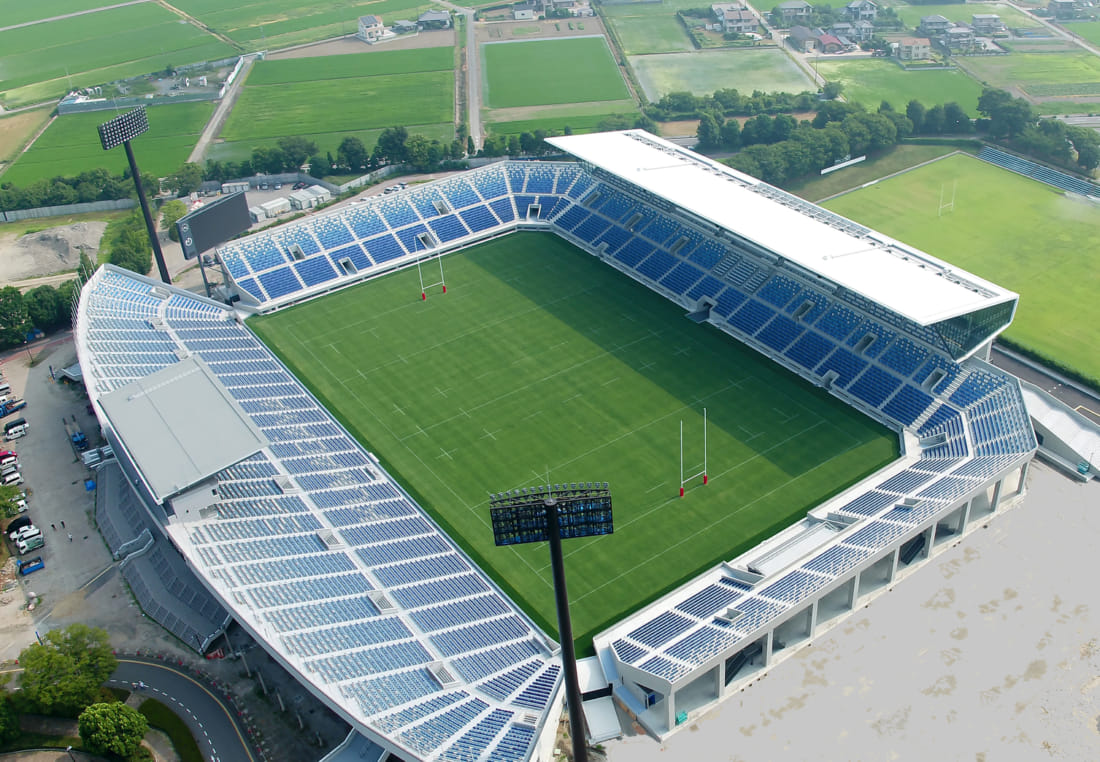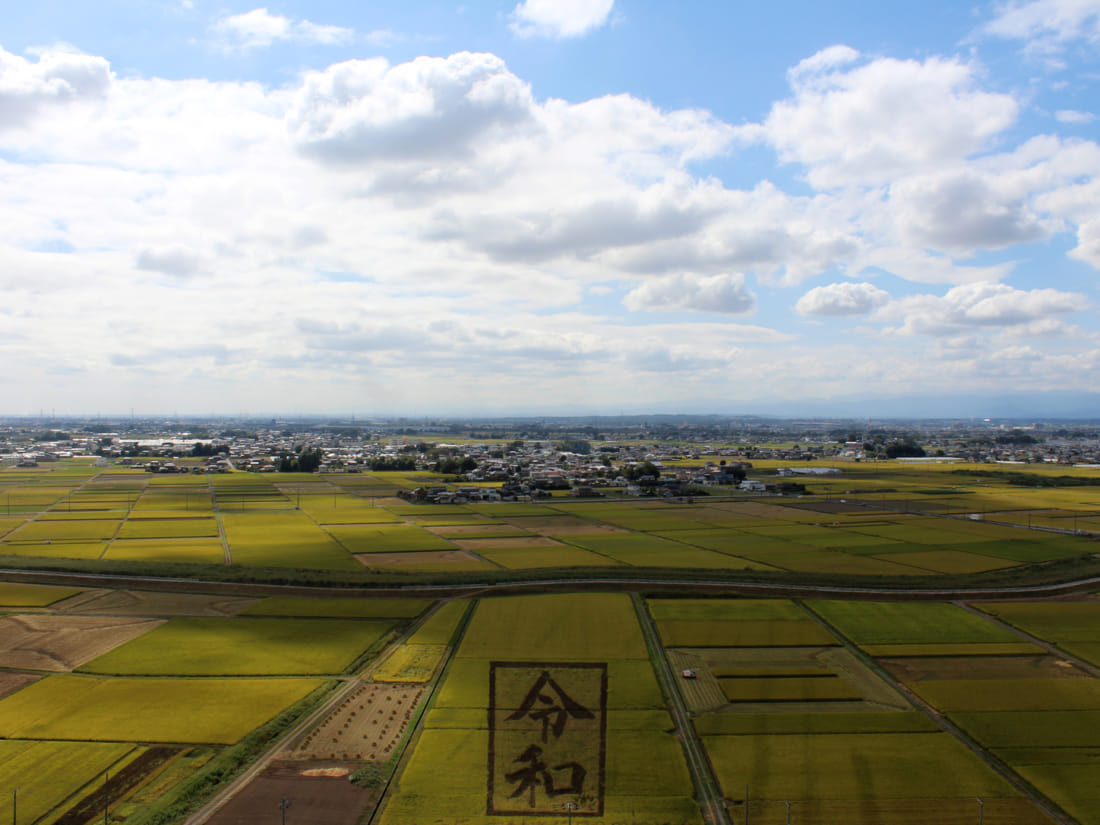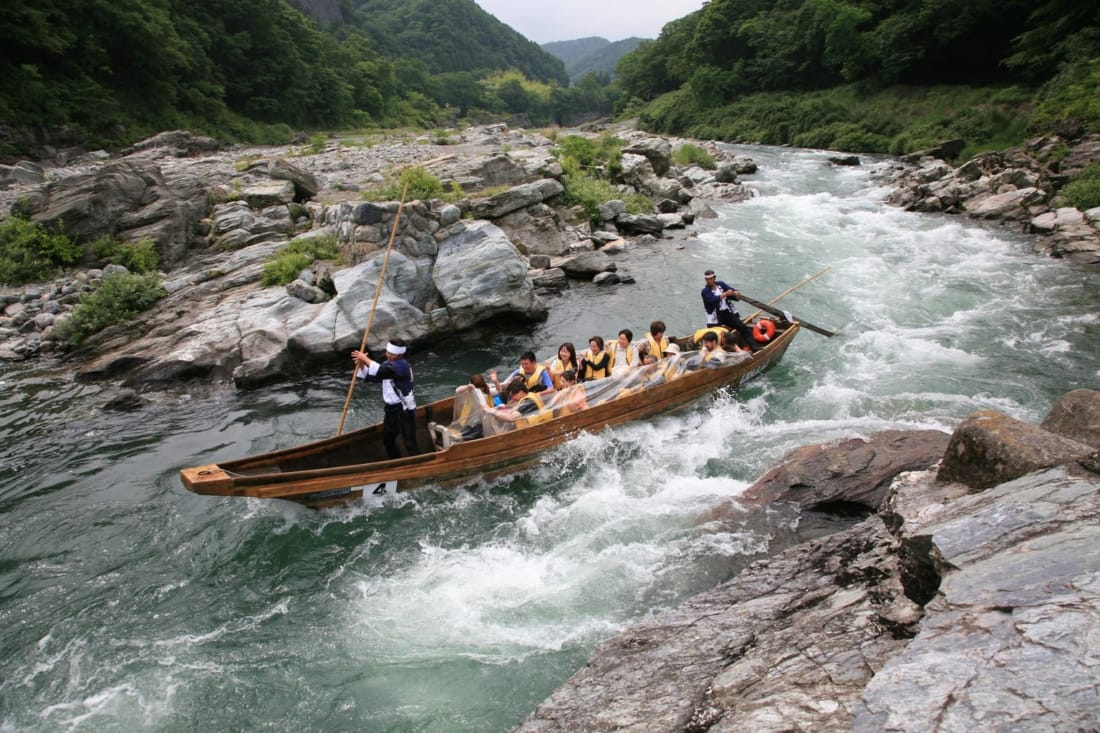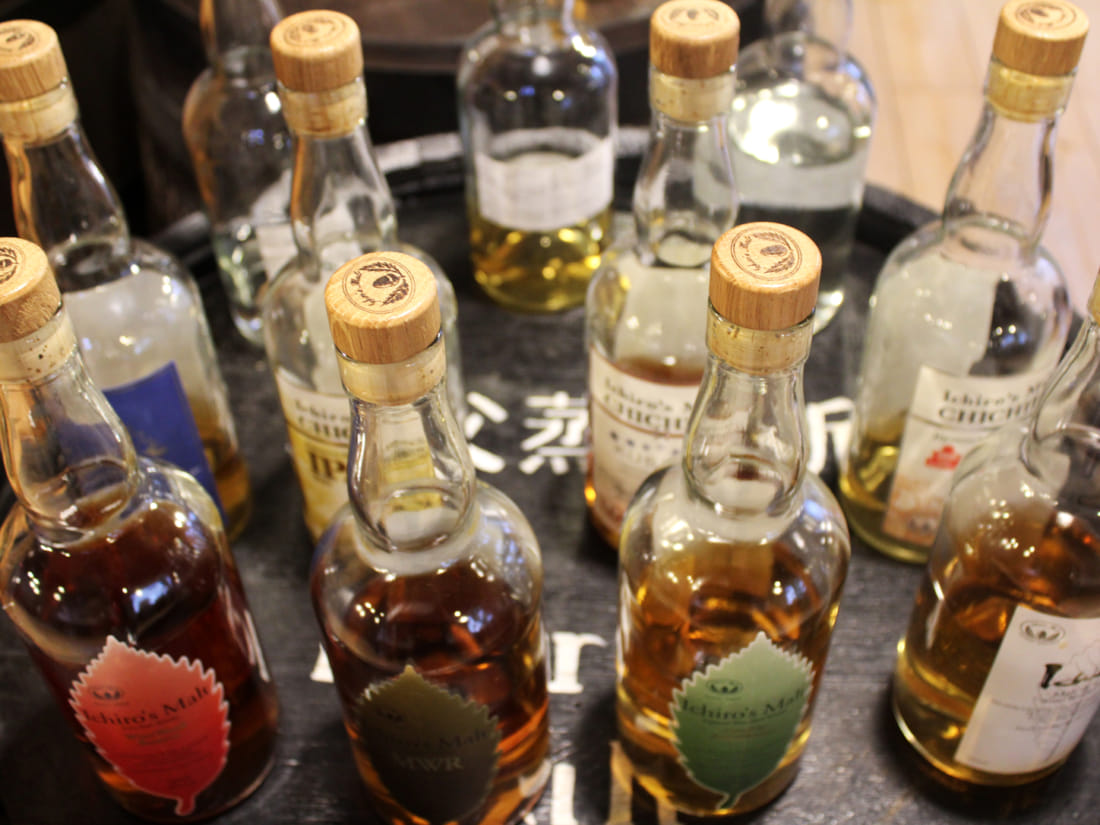Saitama, Tokyo’s quiet neighboring prefecture to the northwest, typically hides in the doldrums of Japan’s tourism sphere. During the 2019 Rugby World Cup however, it managed to strike a chord with many a traveling fan. Kumagaya, a city of 200,000 people nestled on the northern border with Gunma, was Saitama’s resident World Cup host-city. If you want to explore the prefecture, it’s not a bad place to start.
Menuma Shodenzan Temple
Menuma Shodenzan Temple, sitting in the outskirts of Kumagaya, is a grandiose Shingo Buddhist edifice dating back to the 1100s. The temple grounds are studded with the familiar trappings of an ancient Japanese holy precinct: spiritual monuments, engraved gates, masonry statues, towering pagodas and wooden bell towers. Given the ‘sleepier’ vibe of Saitama – in relation to its crowded and bustling neighbor to the south – the area around Menuma Shodenzan provides a nice setting for a leisurely stroll.
The temple’s honten (main hall) is a pretty fine structure in itself, but the colorful, artistic depictions etched into the exterior of the inner hall are the architectural highlights. Classic folktales, spiritual iconography and daily life in the days of pre-colonialism, are detailed through a tapestry of carvings on the temple’s furring wood sidings. Though the carvings were added this century, they focus primarily on the Azuchi-Momoyama Period (1568-1600) – the last days of the Sengoku era just prior to the formation of the Tokugawa Shogunate.
Kumagaya Rugby Stadium
Kumagaya is one of the true homes of Japanese rugby; the sport anchored itself here back in the 1950s. The Kumagaya Rugby Stadium, built in 1991, has become an icon of the city with Top League team, Panasonic Wild Knights, calling it home. It also hosted three World Cup encounters this autumn: Russia vs Samoa, Georgia vs Uruguay and Argentina vs USA.
As rugby plays such a central role in Kumagaya culture, a night out at the 24,000-capacity outdoor arena, particularly during a Wild Knights game, is a great way to get a feel for the city. The pitch is also used for a variety of other Top League games and university rugby matches, making it one of the most active ad hoc rugby stadiums in Japan.
Gyoda Rice Paddy Art
The countryside near Kumagaya is filled with flat, scented meadows and a patchwork of low-lying fields. The lack of undulation gives the area a kind of rural Dutch air; all that’s missing are a few tulip beds and a white-brick windmill. Where it becomes a little more distinctly Japanese, is in the type of crop which reigns supreme here: rice. And the extravagant rice paddy art that’s cultivated into a patch of land in the outskirts of Gyoda (Kumagaya’s neighboring city).
From the 50-meter high observation tower you get an excellent vantage point from which to admire the art. And in the summer, you can look down upon a sprawling lotus flower farm to the west. The art, which is created by growing different colored rice plant species (as opposed to spraying or painting), depicts various icons from Japanese society and pop-culture; the biggest to date covered 2.4 hectares. Currently Michael Leitch, Fumiaki Tanaka and Kazuki Himeno of the national rugby team are on display (feature image). (Typically, the art is on show between early August and late October.)
Nagatoro Village
Nagatoro is fetching little town of 8,000 people, lying to the west of Kumagaya. Sitting at the foot of Mt Hodosan, and dissected by the upper reaches of the Arakawa river, the town is home to some very pleasing vistas. In the hotter months of the year, outdoor activities – hiking on Hodosan, and kayaking in the white-water rapids of the Arakawa – are some of the town’s most popular. For those who don’t fancy breaking a sweat, you can also take boat tours through tree-banked, limestone ravines formed by the erosive forces of the river.
If you’re inclined to stay the night, consider Choseikan ryokan, with its geothermal hot spring baths, and private rooms with rotenburo. The ground-floor dining room looks out upon the river, and the kitchen serves up some seriously tasty udon noodles – a specialty in the region. After Kagawa Prefecture, Saitama is Japan’s second largest udon consumer; so, they’ve got the making of this noodle down to a pretty fine art.
Chichibu Distillery Whisky (Ichiro’s Malt)
If you’re partial to a drop of whisky every now and then, don’t leave Kumagaya without sampling some Ichiro’s Malt from the Chichibu distillery. Whether you like single-malt or blends, peaty flavors or fruity notes, they have a concoction for most imbibers. The eponymous distillery operates in Chichibu City, in the heart of Saitama (though unfortunately they do not offer tours for visitors). However, most bars, izakayas and selected liquor stores around Chichibu – and elsewhere in Saitama – should have it in stock.
Ichiro’s Malt whiskies – named after the distillery’s founder – take their flavor from northern European malted barley and Japanese oak distillation casks, before being aged in wooden barrels. Some of the top-sellers are stored in barrels from the Caribbean (previously used to house rum) which imbue the whisky’s flavor with a special je ne c’est quois. Shu-san from the distillery tells me, “The correct water and four distinct seasons also add flavor to the whisky. This is why Japanese whisky tastes so good.”

